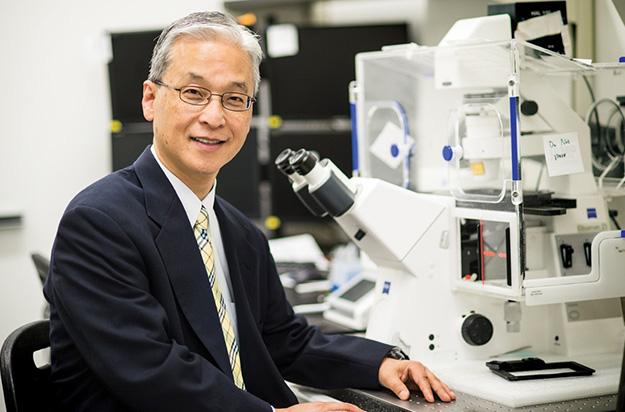New approaches to battlefield brain injuries

Credit: UT Arlington
chair of the Bioengineering Department at The University of Texas at Arlington is investigating whether a combination of nanoparticles and light therapy can better treat traumatic brain injuries on the battlefield.
The Office of Naval Research awarded Michael Cho a three-year, $794,503 grant to determine if a combination of a non-biologic polymer and light waves is an effective treatment for battlefield brain injuries.
“The benefit of using multiple modes of treatment is that when they are combined, their effects are multiplied,” said Cho, who also is a UTA professor of bioengineering. “These treatments would be easy to administer on the battlefield, so injured soldiers could minimize the risk of suffering adverse health effects until they can be transported to a hospital for treatment. Each therapy has proven to be effective on its own, so it’s exciting to be able to test and find out if their combined efficacy is what we think it will be.”
Cho will use adjuvant therapy, which is combining two therapies that work independently to create a synergistic effect with better outcomes. First, he will test whether a non-biologic polymer known as P188, which the Food and Drug Administration has approved as a blood thinner, is effective in repairing damage to the blood-brain barrier. P188 is proven to improve blood flow and increase cell viability, and it has shown promise for amazing repair effects if the damage is below a critical threshold.
Cho’s research will improve understanding of the dynamics of the reparative process in the blood-brain barrier so that P188 can be used effectively. He will deliver P188 in nanoparticles that will travel through the bloodstream to the brain, where they are designed to attach specifically to the injured area.
In addition to P188, Cho will collaborate with his colleague Hanli Liu, a UTA bioengineering professor who has extensive experience with using light to improve brain activity. Together, they will see if adding light therapy to the P188 treatment will result in increased healing.
Liu has shown that light beamed through the skull at certain wavelengths results in increased blood flow. She is exploring whether LED lights, along with sensors, could be installed in a soldier’s smart helmet. The sensors could detect an explosive blast and activate the lights to increase blood flow, which could mitigate the extent of potential damage to the brain. It is also feasible that the soldier could take a pill with the P188 nanoparticles to begin to repair the blood-brain barrier immediately.
The team also is considering using non-invasive lights to stimulate brain function and prevent combat fatigue, as brain cells that interact with light produce more chemical energy. If a soldier began to feel tired, for example, he or she could turn on the helmet lights for a quick lift, rather than relying on pills or caffeine.
“This is important research because, if successful, it will prove that P188 is an effective treatment option for traumatic brain injuries, and that Dr. Liu’s extensive work in using light to treat those injuries could be greatly enhanced by using P188 in tandem,” said Peter Crouch, dean of the College of Engineering. “This could greatly enhance our ability to keep our soldiers healthier.”
###
– Written by Jeremy Agor, College of Engineering
Media Contact
Herb Booth
[email protected]
Original Source
https:/




